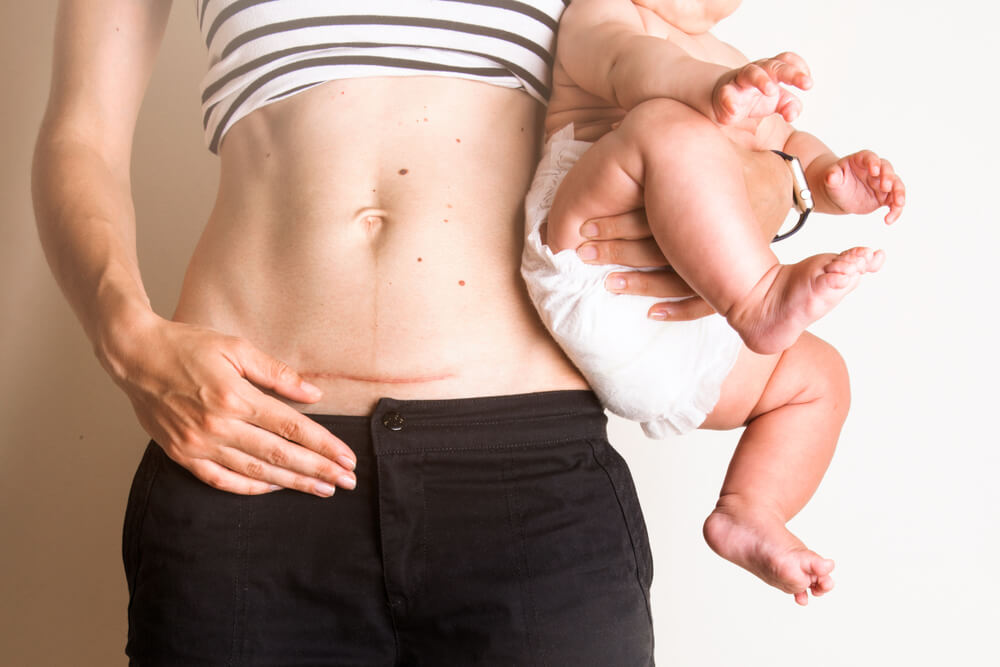In a world of evolving healthcare and advanced medical procedures, Cesarean deliveries, commonly known as C-Sections, have emerged as a significant tool for ensuring the safety of both mother and child during childbirth. C-Sections, which are surgical procedures used to deliver babies through the mother’s abdomen, are often resorted to in scenarios of childbirth complications, high-risk pregnancies, or based on personal preference.
As beneficial as C-Sections are, however, numerous questions surround their frequency and safety parameters. Childbearing women often wonder about the C-section limit, raising inquiries like, “How many C-Sections can you have?” This question arises mainly due to concerns about potential risks involved, such as infection, complications from anesthesia, or increased recovery period.
Even medical professionals, such as Dr. White from the OBGYN in Coral Springs, Florida, stress repeated caesarean procedures, adding weight to the need for understanding and addressing these concerns.
This discourse aims to offer insights into the topic, exploring the question from various angles and shedding light on multiple elements like repeat C-section deliveries, consecutive C-section risks, and maximum C-sections a woman can undergo without jeopardizing her health. By delving into medical studies, testimonies, and expert advice, services of vaginal and cesarean deliveries in Coral Springs, FL aim to strike a balance between fact and misconception, providing you all the necessary information to make informed decisions about your health during childbirth.
Explaining the Procedure
Grasping the complexity of the C-Sections operation can contribute significantly to understanding its frequency, safety, and mitigating potential cesarean delivery risks. In essence, a C-Section is a surgical procedure used to deliver a baby through incisions in the mother’s abdomen and uterus.
Description
A C-Section typically lasts about 45-60 minutes. The surgery begins with a sanitized environment where an anesthesiologist administers either a regional anesthetic (epidural or spinal block) to numb the lower half of the body or less commonly, a general anesthetic. A screen is placed over the abdomen so the woman can’t see the procedure.
The surgeon makes a horizontal cut in the skin above the public hairline, then through the underlying tissue, to the abdomen’s wall. They then open the wall to reveal the uterus and make a second incision in the lower part of it. The baby is gently lifted out, the umbilical cord is cut, and the placenta is removed. Lastly, the incisions are stitched closed. Importantly, good C-section aftercare is vital – it can speed up the healing process, reduce the risk of infection, and contribute to quicker recovery from multiple C-Sections.
Cases requiring C-Sections
There are a few common situations where a C-Section may be required or considered safer than vaginal delivery. For instance, if labor isn’t progressing, if the baby is in distress or in an abnormal position, if the baby’s head is too big to pass through the birth canal, or if the mother has a condition like placenta previa – where the placenta blocks the cervix.
Multiple pregnancies often lead to a higher C-section frequency too, particularly if you’re having twins or triplets. Additionally, if a mother has had a previous C-section, a doctor might recommend a repeat procedure. However, it is important not to exceed the maximum C-sections a woman can safely have, as this can lead to increased C-section complication rates.

Discussing the Limits & Risks
As the conversation concerning multiple cesarean deliveries continues, it is necessary to delve into the C-section limit and potential risks associated with repeated caesarean procedures. The goal is to strike a balance between ensuring maternal and infant safety, and allowing for the natural process of childbirth to take place whenever possible.
Defining Appropriate Limits
The question of the maximum safe number of C-sections a woman can have does not have a definitive, one-size-fits-all answer. The ‘C-section limit’ varies from woman to woman and depends on numerous factors, including her overall health, age, and the specifics of previous birthing experiences. However, general medical consensus indicates that each successive C-section presents slightly increased risks, making the cesarean section count a subject worthy of careful consideration.
Some studies have indicated that when it comes to number of C-Sections, the risks do not significantly increase until potentially after the third or fourth procedure. Thus, it’s crucial to have ongoing conversations with your healthcare provider about your specific health profile and the potential risks of multiple cesarean deliveries.
Potential Risks
A discussion about the maximal C-section count naturally segues into the potential risks associated with numerous cesareans. While C-Sections are generally considered safe, like any surgical procedure, they do come with risks.
Repeated C-Sections can increase the risk of:
- heavy bleeding,
- bladder
- bowel injuries
- complications in the placenta in future pregnancies.
There is also a potential risk of adhesion formation, where scar tissue sticks together, potentially leading to pain or a bowel blockage. The incidence of a rare but serious complication called placenta accreta, where the placenta grows too deeply into the uterine wall, also increases with each C-section.
Such consecutive C-section risks can be mitigated through diligent C-section aftercare and by following all medical advice. Remember, the goal is always safety first, for both mother and child, in any childbirth scenario.
Personalizing the Decision
When pondering over the question, “How many C-Sections is safe?”, it is instrumental to understand that the decision ultimately needs to be personalized, considering the particular health status of the woman in question and grounded on the consultation with a trusted medical health provider.
Role of Individual Health Condition
A woman’s overall health status significantly influences the safe C-section limit. Factors such as age, body mass index (BMI), previous medical and surgical history, and underlying health conditions all play crucial roles in determining the number of safe C-Sections possible. For instance, women with chronic health conditions such as diabetes or heart disease may face higher risks in subsequent C-section procedures.
Moreover, recovery from multiple C-sections also hinges on one’s health condition and the body’s ability to heal, thus making each woman’s experience unique. Hence, although guidelines and research provide essential insights into understanding the maximal C-section count, one must not overlook the role of individual health conditions in this equation.
Importance of Expert Consultation
While conducting personal research and gaining knowledge is significant, it should not replace expert medical advice. Every woman considering multiple cesarean deliveries should emphasize her own experiences and health status during consultation with her doctor.
Through these open dialogues, doctors can educate patients about the potential cesarean delivery risks and consecutive C-section risks specific to their scenario.
They can provide comprehensive understanding about the safety parameters around the number of cesarean sections and guide the decision-making process considering the mother’s and the baby’s best interest. It is through these personalized consultations, that informed, safe decisions on childbirth through C-section are made.
Final Thoughts
Understanding the limits and risks of C-Sections is an integral part of the journey toward informed and safe childbirth. As we’ve discussed, a Cesarean delivery is a complex surgical procedure used to deliver a baby. It carries its own risks and recovery procedures, especially when performed consecutively. Therefore, knowing the C-section limit, understanding cesarean delivery risks, and ensuring good C-section aftercare significantly influence the childbirth experience.
However, one crucial factor remains the key – this decision is highly personalized and is largely determined by the woman’s overall health condition and the specifics of her birthing history. In other words, the maximal C-section count varies from woman to woman. Hence, while guidelines and data offer valuable insights, they should not be considered as the universal vestige for safe C-Section numbers.
An expert consultation is as important as personal research. Doctors can provide personalized advice concerning multiple C-section safety, present the potential risks in a way that is relevant to a woman’s specific situation, and handhold her through the decision-making process.
We strongly encourage you to consult locally available medical professionals for personalized advice concerning C-Sections.
Remember, while the wonders of modern medicine and surgery have made C-Sections a safe and commonly practiced procedure, it is a decision that should not be taken lightly. Your health, and the health of your unborn child, deserve informed, personalized decisions, so do not hesitate to seek professional medical advice at our center and assure a safe path to childbirth.


